Agronomic Insights

Jim Laycock – IPF Senior Technical Agronomist & Clint Sheather – IPF Technical Agronomist
In most areas of the southern region, 2024 is shaping up to be another good winter crop season after what some have described as the ‘best El Nino on record’ delivered unexpected rainfall to many. But, after several big nutrient removal seasons, soil-nitrogen levels are low and growers will need a tailored nitrogen strategy to optimise grain yield and returns.
In 2024, growers and agronomists will need to ensure cereals and canola have an adequate supply of nitrogen (N). This means managing N application rates with application timings and placement methods to maximise N use efficiency.
Figure 1 & 2. Grain phosphorus and nitrogen removal from the 2020 (canola) 2021, 2023 (wheat), 2023 (canola) harvests at the IPF Long Term Nitrogen x Phosphorus Trial, Glenelg NSW, established in 2007
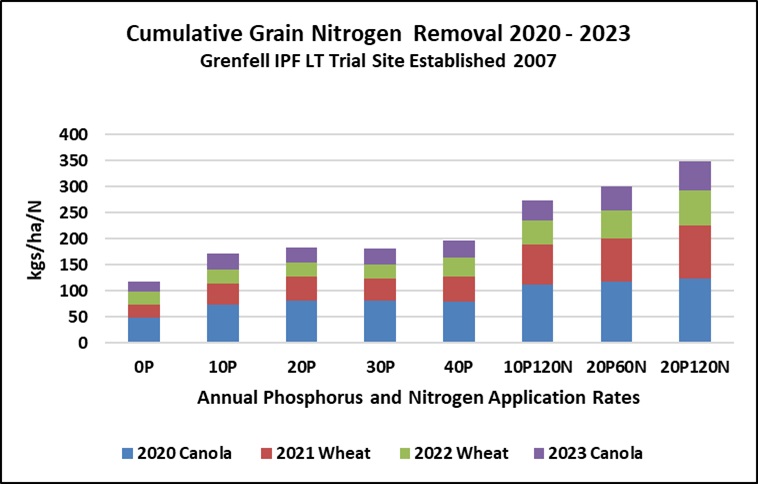
Figure 2.
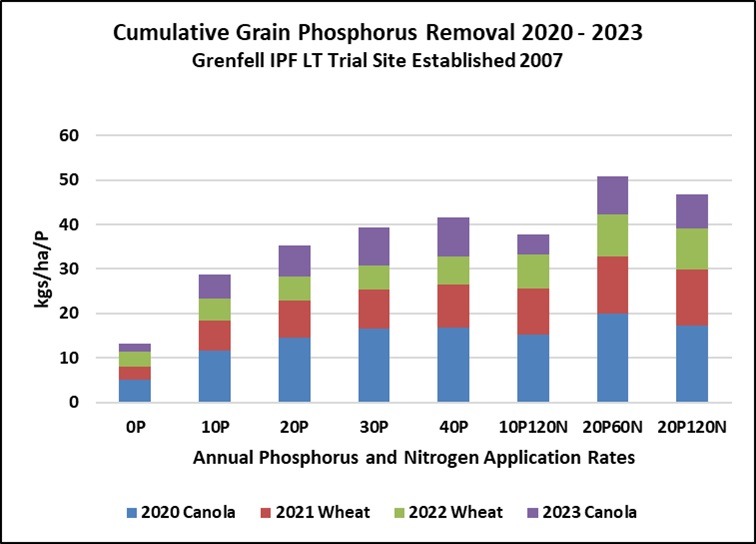
N is essential for dry matter production, shoot density and potential yield in cereals. When crops begin to mature, N within the plant is redirected to developing grains. Carbohydrates are then deposited within the grain, and it is the level of carbohydrates that determine grain size and yield. This dilution of N in grain also determines final grain protein levels.
In short dry springs, crop yields are reduced because they are unable to fill each grain, and the percentage of grain protein is much higher and often grain size is smaller. Longer soft finishes to the growing season allow crops to fill to full capacity, but if adequate N is not available then low grain protein levels can result from diluted N levels.
Nitrogen budgeting
Achieving the targeted yield, grain size and protein results in winter cereals can be a juggling act when it comes to managing N inputs between preplant and booting, and for irrigated and high-rainfall systems, right through to flowering. As there are numerous things that can affect crop yield and protein potential, it’s critical to identify whether N is the only limitation.
The first step in planning N applications is a simple budgeting process to assess how much N you need to grow a target yield and protein. Once you know the N demand, you can determine the amount of fertiliser required.
Estimating existing N supply
There are several tools available to advisers to help determine the existing nitrogen supply, such as reviewing paddock fertiliser and crop histories, deep soil nitrogen testing, in-crop NDVI, and shoot density. The best decisions are made using reputable information collected from a range of sources.
Information such as previous crop yield, previous grain protein levels, crop rotation, fallow weed control, soil moisture levels, seasonal conditions and expectations can all help guide topdressing decisions.
Pre-plant deep soil nitrogen test results are another excellent resource for nitrogen management. One of the disadvantages in low soil nitrogen paddocks if additional nitrogen has not been applied at seeding is there may be a requirement for early topdressed nitrogen at mid-tillering to establish the desired target shoot density by GS30. Easy N® through streamers or dribble bars is ideally suited to this scenario with accurate placement, timely application and potentially less volatilisation losses than urea on alkaline soils.
Sampling in-crop can also play a role where deep N test weren’t taken pre-plant. When sampling post planting, be careful to avoid any banded pre-plant nitrogen or starter nitrogen fertilisers.
N losses when top-dressing
When broadcast on the soil surface both liquid or dry urea or urea containing products or blends can be susceptible to ammonia (NH3) loss. Factors that can lead to increased NH3 volatilisation losses from top dressed urea are:
- light rain post application, enough to dissolve the urea granule but not enough to wash the dissolved granule into the soil
- crop residue on the soil surface
- temperatures above 18°C
- alkaline soils
- wind
- low soil cation exchange capacity
- application to a moist soil that dries after application
The safest applications are those made to dry clay soils, in low humidity conditions with no wind and sufficient rainfall to move the urea into the soil within a few days of the application.
Methods to accommodate these losses include increasing the rate of N applied, or using Enhanced Efficiency Fertilisers which are coated to reduce nitrogen losses, like Green Urea NV®.
IPF trial work in the Mallee in 2014 demonstrated the effectiveness of Green Urea NV® over urea with an early September top-dress and 17 days before a welcome rainfall event of 35mm. The Green Urea NV® treatment returned a significant grain yield response over urea (0.41t/ha), protein response (0.7%) and improved nitrogen use efficiency from 33.7% for urea to 60.5% for Green Urea NV®.
All farming systems should aim to maximise nutrient use efficiency. When choosing the most appropriate product to apply consideration should be given to the rate of application, the frequency of application, the timing of the application, the economic objectives, and any environmental consequences.
References
Turner DA, Edis RE, Chen D, Freney JR, Denmead OT (2012) Ammonia volatilisation from nitrogen fertilizers applied to cereals in two cropping areas of southern Australia. Nutr Cycl Agroecosyst DOI 10.1007/s10705-012-9504-2.
Russell JS (1963). Nitrogen content of wheat grain as an indication of potential yield response to nitrogen fertilizer. Australian Journal of Experimental Agriculture and Animal Husbandry 3: 319-325
Glenn McDonald and Peter Hooper GRDC Update 2013 Nitrogen decision – Guidelines and rules of thumb
Ashley J. Wallace . Roger D. Armstrong . Peter R. Grace . Clemens Scheer .Debra L. Partington Nitrogen use efficiency of 15N urea applied to wheat based on fertiliser timing and use of inhibitors. Nutr Cycl Agroecosyst (2020) 116:41–56
Roger Armstrong, Ash Wallace and Katherine Dunsford, GRDC Update 2021, Nitrogen fertiliser use efficiency ‘rules of thumb’ – how reliable are they?
Futher information
For more information or advice about staying on track with topdressing this season, feel free to contact me on 0427 006 047 or jim.laycock@incitecpivot.com.au
You can also contact:
Clint Sheather clint.sheather@incitecpivot.com.au
Lee Menhenett lee.menhenett@incitecpivot.com.au
Resources
DOWNLOAD INSIGHTDISCLAIMER
This is a guide only, which we hope you find useful as a general tool. While IPF has taken all reasonable care in the preparation of this guide, it should not be relied on as a substitute for tailored professional advice and IPF accepts no liability in connection with this guide. Incitec Pivot Fertilisers manufactures and sources fertilisers from other suppliers. The fertiliser supply chain extends beyond the company’s direct control, both overseas and within Australia. Incitec Pivot Fertilisers hereby expressly disclaims liability to any person, property or thing in respect of any of the consequences of anything done or omitted to be done by any person in reliance, whether wholly or in part, upon the whole or any part of the contents of this article.
You might also be interested in these
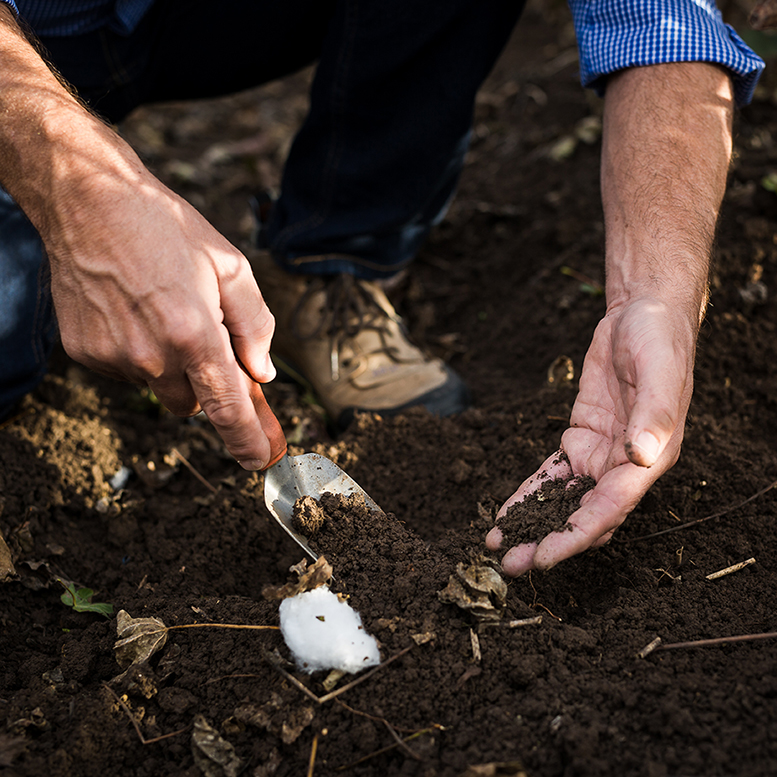
Summer Crop
Focus on the future with soil testing
March / 2024
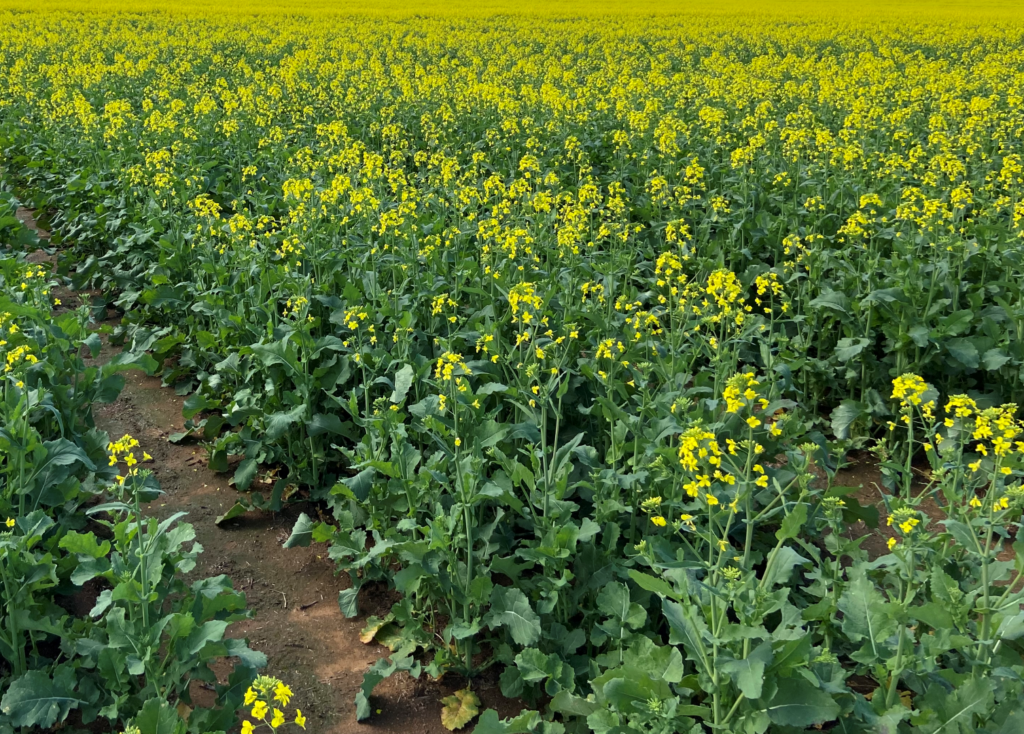
Winter Crop
Measure to manage sulphur in canola plantings
June / 2024
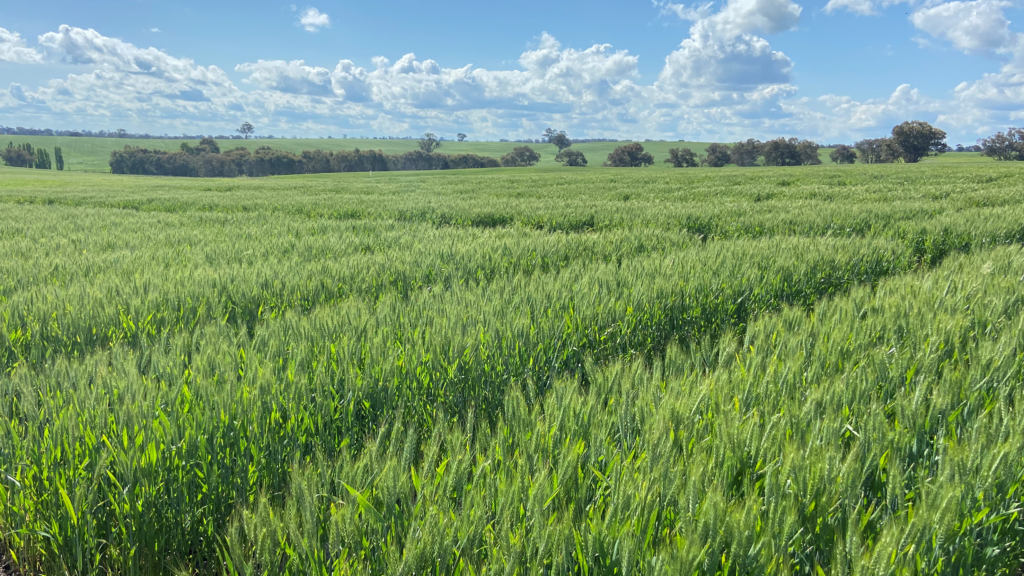
Winter Crop
Foliar nitrogen solutions for a drier season
June / 2023
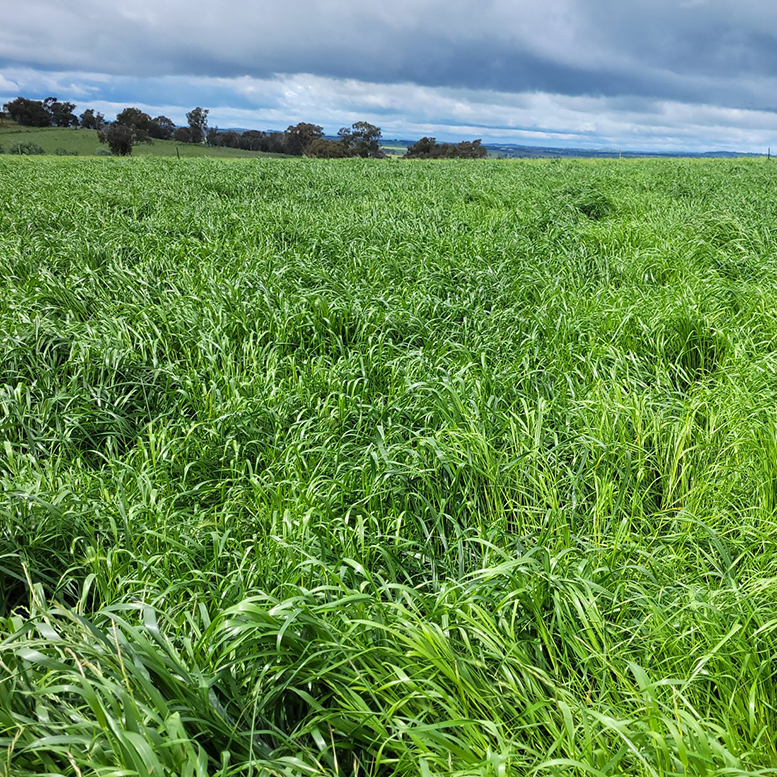
Pasture
Getting the most out of winter nitrogen: practical tips for pasture productivity
May / 2025

